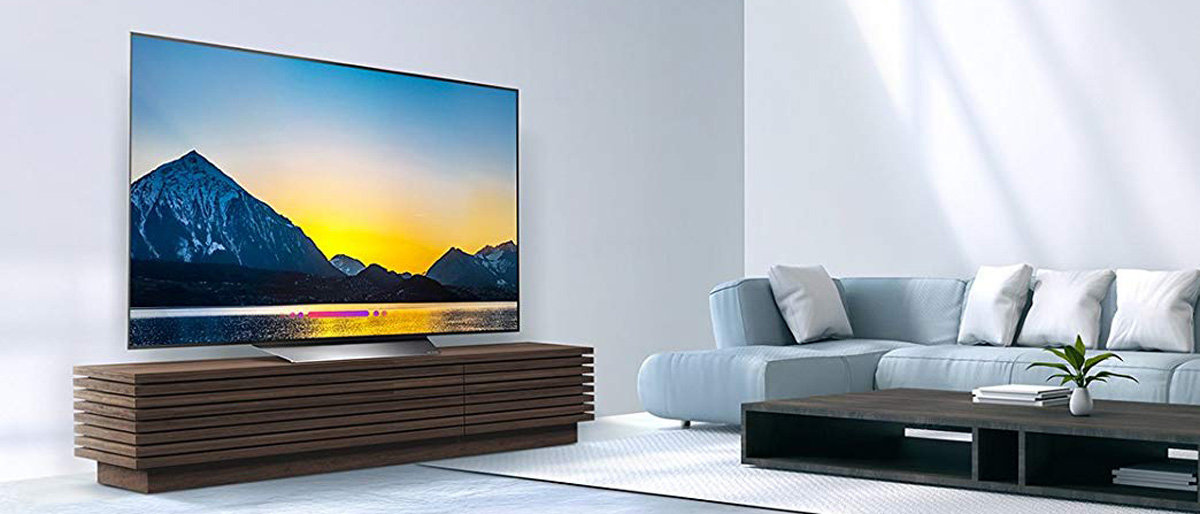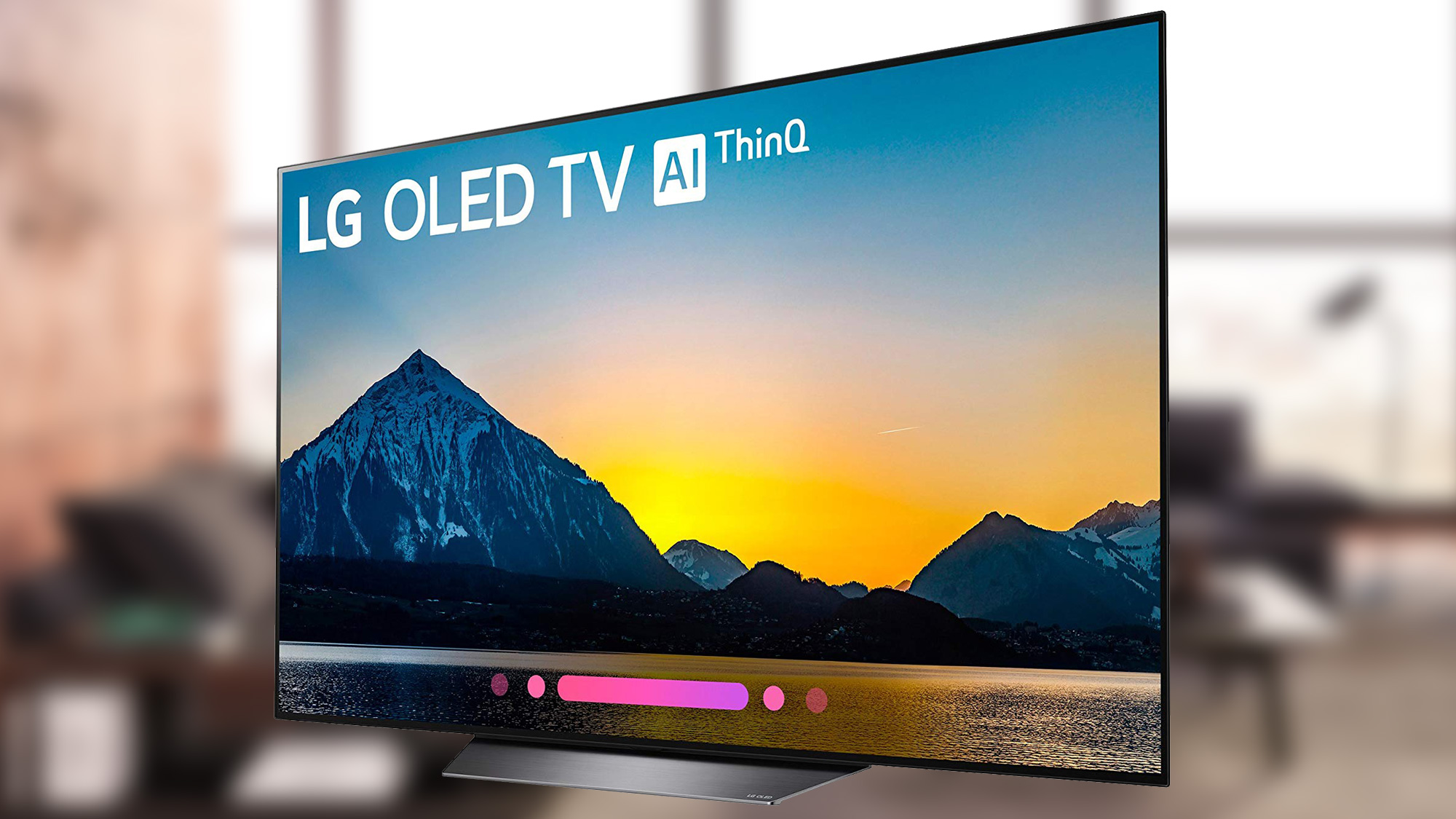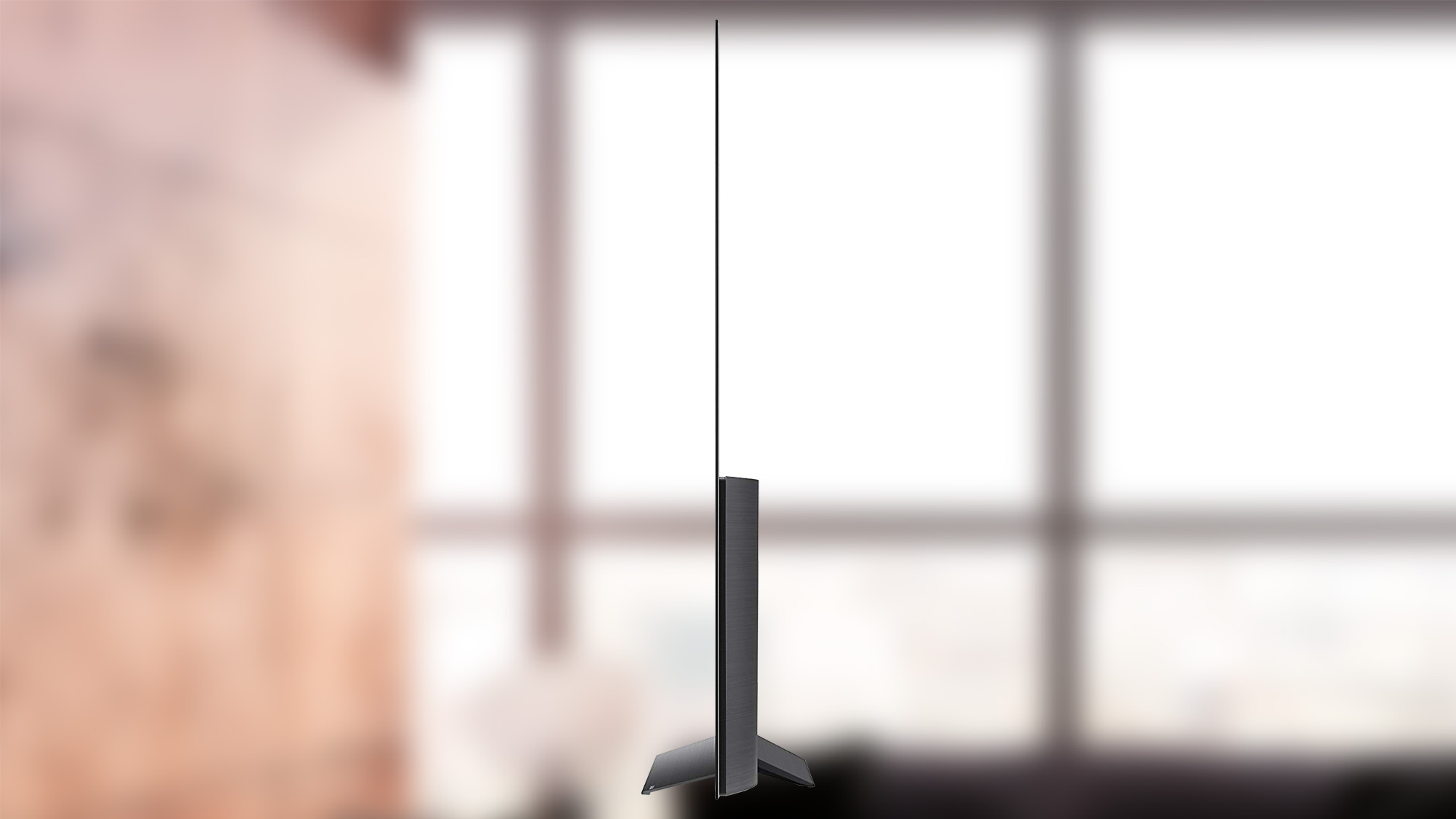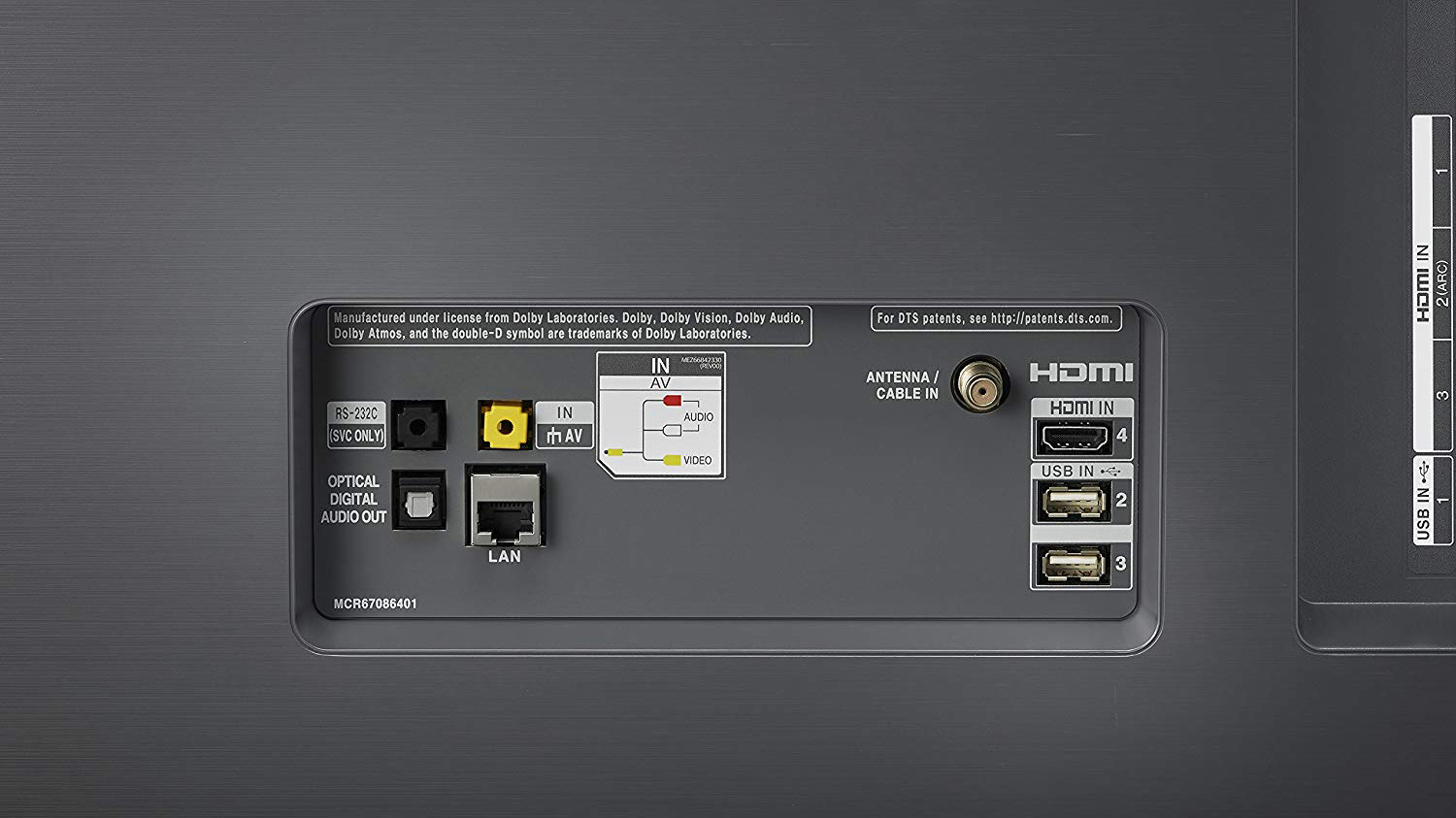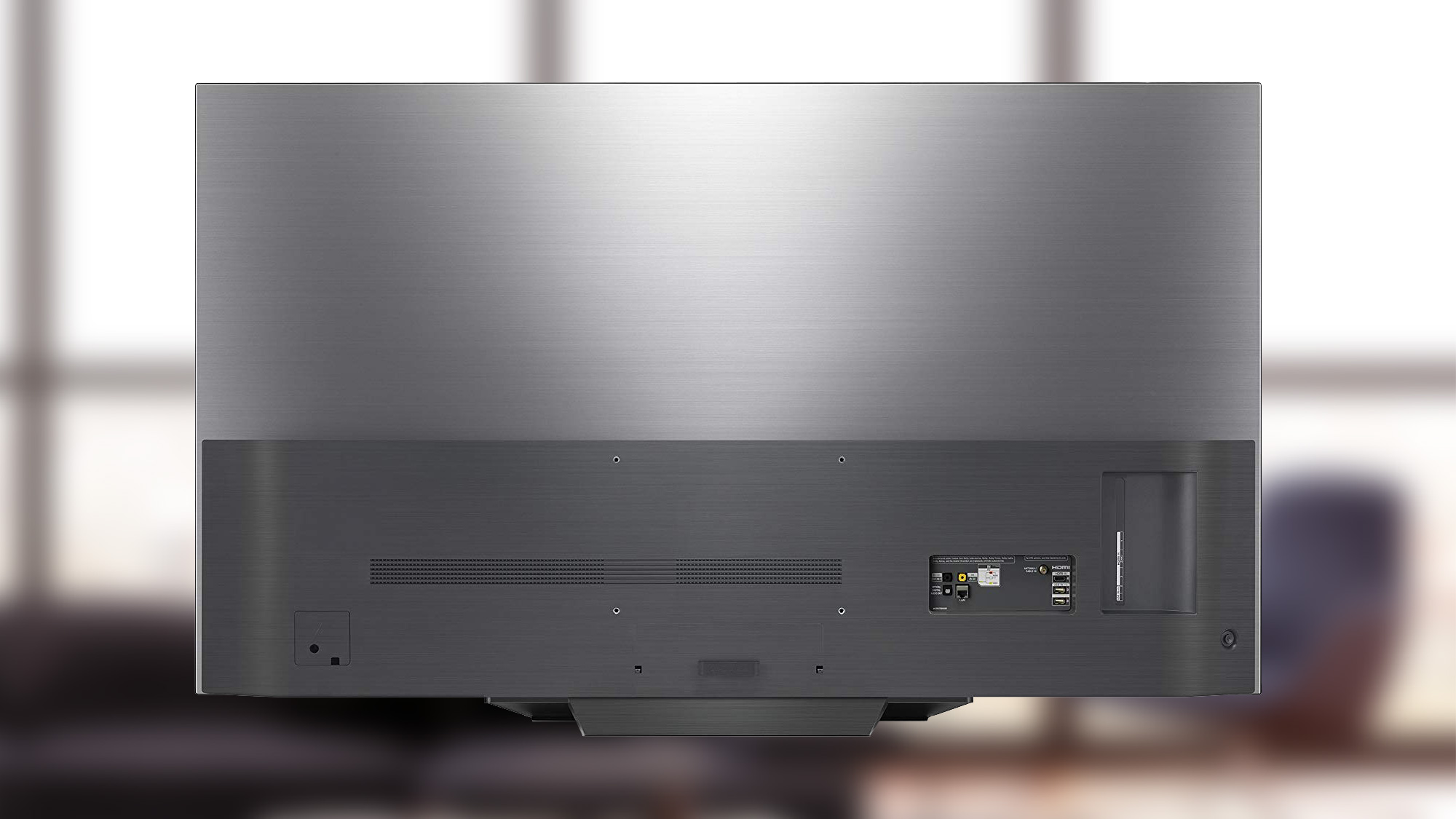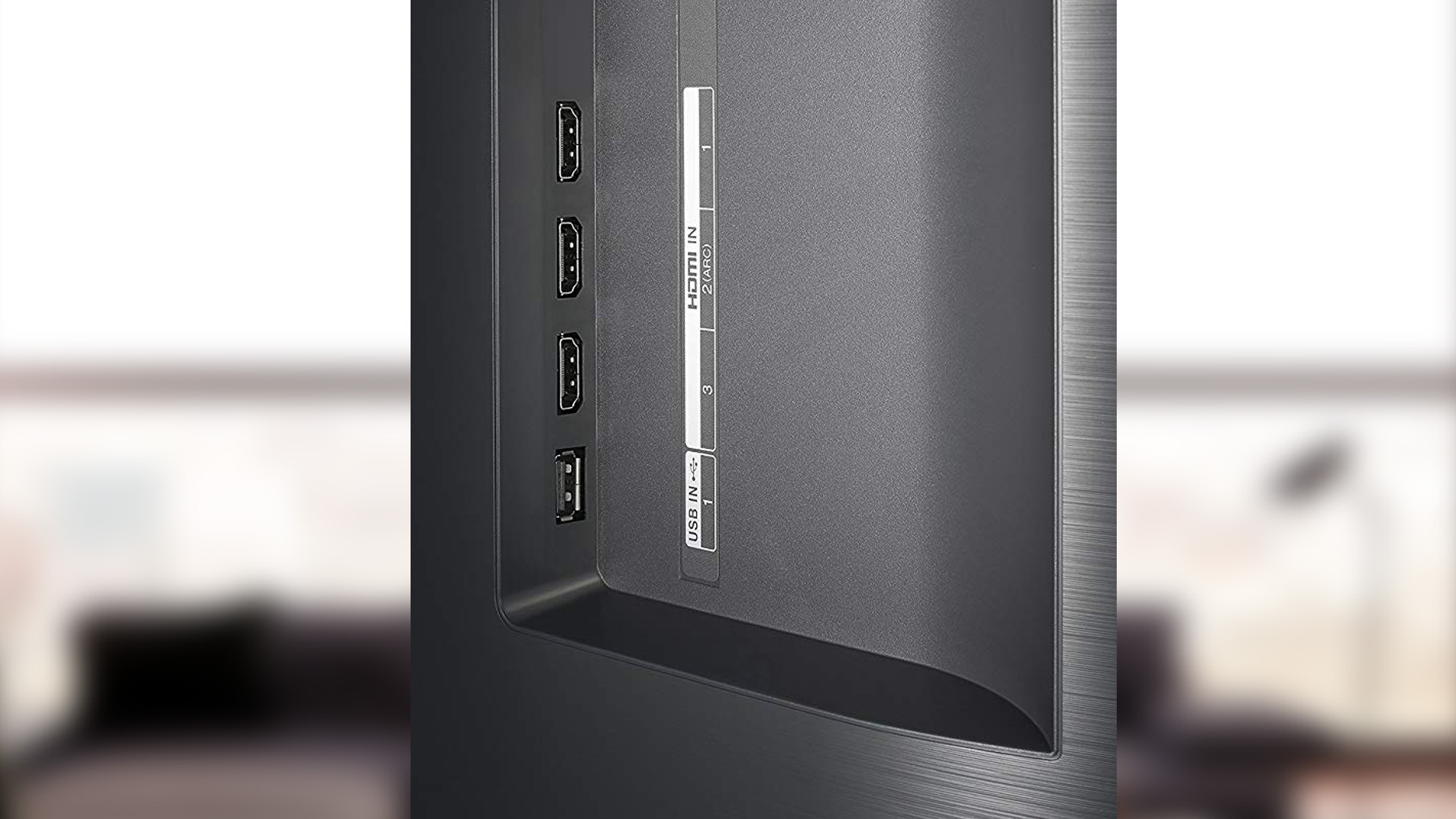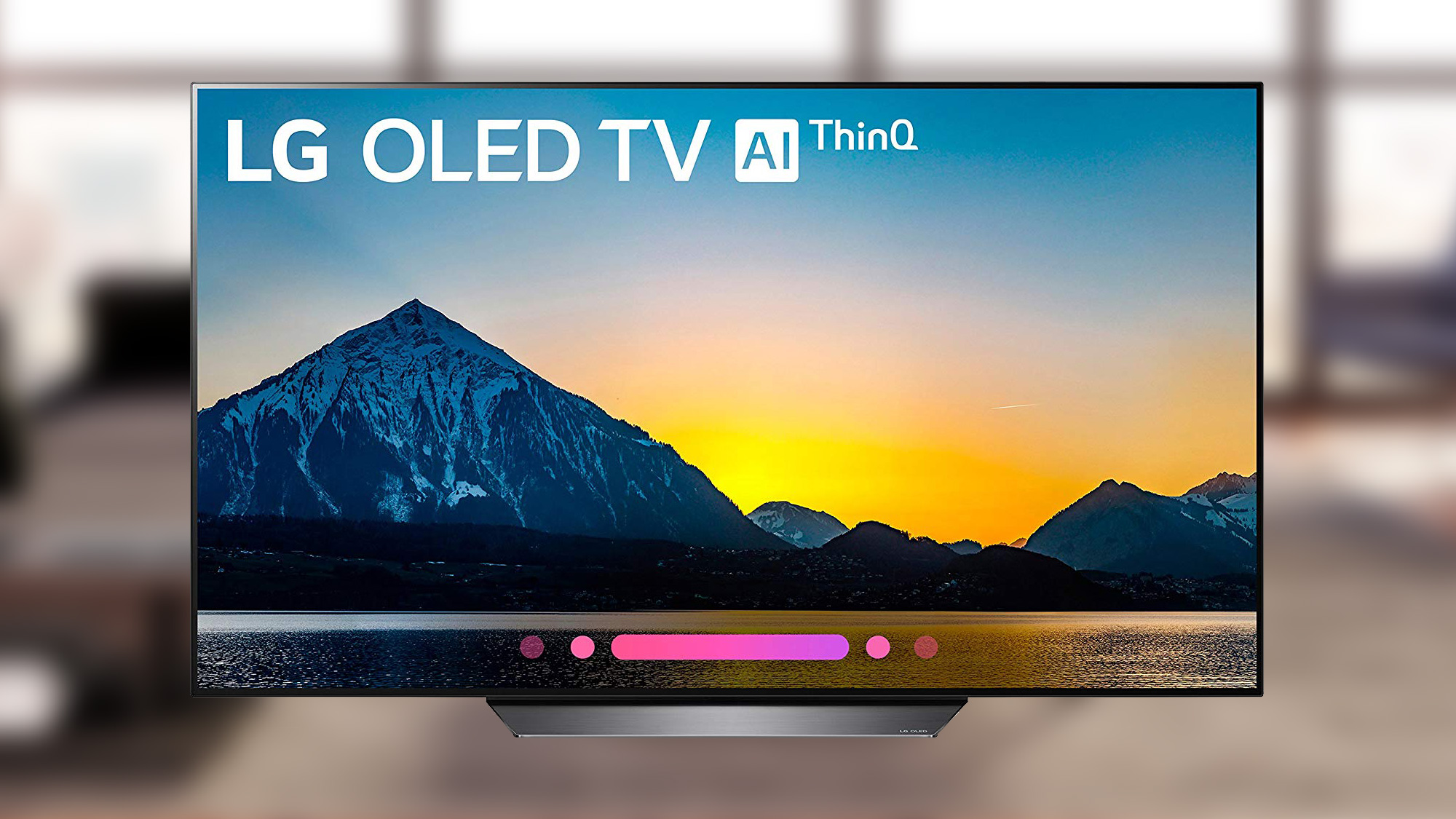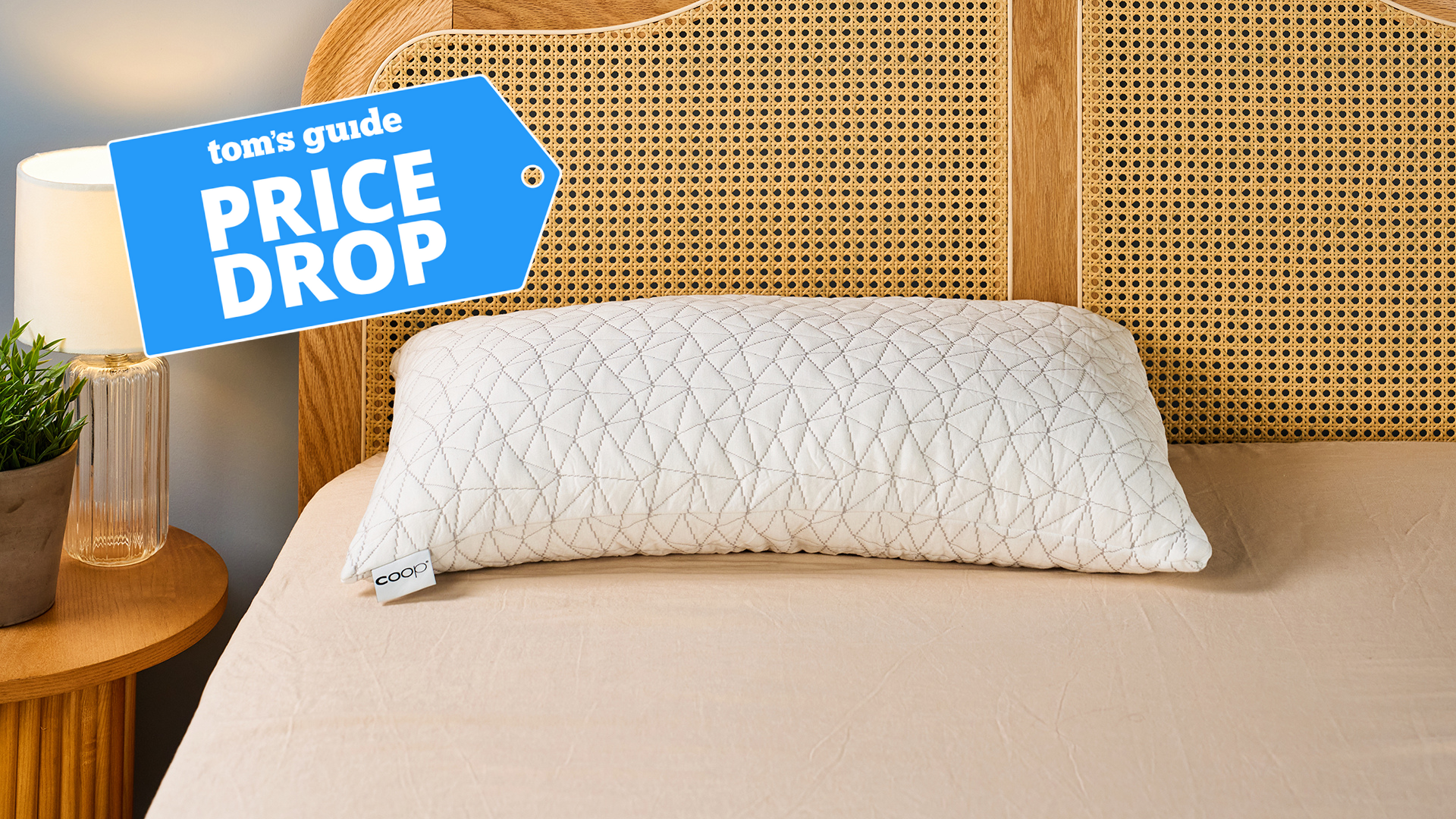Tom's Guide Verdict
The LG B8 OLED is 2018's entry-level model, but the performance is still pretty good and now comes at a decent price.
Pros
- +
Great color and contrast
- +
Great gaming support
- +
Sleek design
- +
Powerful audio
- +
Good price for OLED TV
Cons
- -
Mediocre motion handling
- -
Imperfect HDR performance
Why you can trust Tom's Guide
Everybody loves OLED, and with good reason. The use of individual light-emitting pixels makes for fantastic contrast and perfect black levels, and thanks to LG's refinement of the technology over the last several years, color quality and brightness are better than they have ever been. OLED technology is simply superior to LCD-based displays.
The LG B8 OLED ($1,095 for the 55-inch model seen here) benefits from this same excellent technology. But there's more to a TV than its panel, and while the B8 OLED is perhaps the most affordable OLED available right now, it has some issues that may make it less of a bargain. Still, the LG B8 is among the best TVs because of the picture quality you get for the price.
LG B8 OLED specs
| Price | $1,095 |
| Screen size | 55 inches |
| Resolution | 3840 x 2160 |
| HDR | HDR10, HLG, Dolby Vision |
| Refresh rate | 120 Hz |
| Ports | Four HDMI, three USB 2.0 |
| Audio | 2.2 channels, 40 watts with Dolby Atmos |
| Smart TV software | webOS |
| Size | 48.3 x 27.8 x 1.8 inches [w/o stand] |
| Weight | 35.9 pounds [w/o stand] |
LG B8 OLED price and availability
The 2018 B8 OLED is more than a year old, but it's still an excellent TV, and it now comes at a highly affordable price. Our review is focused on the 55-inch model, the OLED55B8PUA, but this TV also comes in a 65-inch version.
Because the specifications and smart TV software are so similar between the two models, any recommendations we make for the 55-inch B8 OLED will apply to the 65-inch model as well.
LG B8 OLED design
The design of the B8 OLED is sleek and elegant, thanks to LG's display-on-glass panel. The entire set measures 48.3 x 27.8 x 1.8 inches, but overall it's slimmer and sharper than those dimensions suggest. Most of the 1.8-inch thickness is due to the compartment that stretches across the lower half of the B8's rear and houses the components of the TV, such as the main circuit board, speakers and input ports.
There's a lot to love about OLED displays, from the superb black levels and excellent contrast to the great brightness. The B8 OLED delivers on all of these fronts.
With much of the display measuring just 0.25-inches thick and framed by 0.4-inch-thick bezels, the display is stripped of any distracting cabinet or design elements. The picture will often be all you notice, with the design fading away, so only the show or movie remains. This is quite the design feat, but it's one that LG has mastered in its OLED TVs.
Setting up and moving the TV is definitely a two-person job, even at the smaller size and weight of the 55-inch model. This is largely due to the superthin display that gets very little structural support from the otherwise-solid construction. The glass will flex, and attempts to lift and position the TV without an extra pair of hands risk damaging the OLED display. This set also weighs a surprisingly stout 35.9 pounds — 39.2 pounds with the stand attached — which makes maneuvering the mostly glass design all the more delicate an operation.
Get instant access to breaking news, the hottest reviews, great deals and helpful tips.
Below the display is a single brushed-metal stand that elevates the TV and that should look good among pretty much any decor. The stand also has a very manageable footprint, measuring 22 inches wide and 9 inches deep, so you can fit the TV on a table or shelf that's smaller than the overall width of the TV. Should you want to hang the B8 OLED, the rear of the TV will accommodate a 300 x 200mm VESA mount.
LG B8 OLED ports
With two port panels on its backside, the B8 is well equipped for your home theater needs. On the left-facing side panel, you'll find three HDMI ports, including one HDMI ARC connection for simple connectivity to speakers and soundbars. With the single USB port, you can plug in a flash drive or cable for a USB-powered streaming stick.
On the rear panel is a fourth HDMI port, along with two more USB inputs, an RF connector for antenna, a 3.5mm composite video input (with an included adapter that accepts standard RCA jacks), along with an optical digital-audio jack for older surround-sound systems.
An Ethernet port provides wired network connectivity, but 802.11ac wireless lets you connect over Wi-Fi. Also built in to the set is Bluetooth 4.2 for wirelessly connecting to audio devices.
LG B8 OLED performance
There's a lot to love about OLED displays, from the superb black levels to the excellent contrast and great brightness. The B8 OLED delivers on all of these fronts, offering excellent picture quality for movies, shows and games.
The B8 is the most affordable OLED model in the LG 2018 lineup, but thanks to the excellent performance of OLED, this set offers color and brightness to rival LG's more expensive, premium models, even the newer 2019 sets, such as the LG C9 OLED. The 55-inch display delivers excellent 3,840 x 2,160 resolution, offers rich 10-bit color and cranks along with a 120-Hz refresh rate. Colors looked very good, whether it was Viktor Drago's blood-red robe in Creed II or the vibrant Queens backdrop of Spider-Man: Homecoming.
The B8 OLED may be slim, but it manages to pack excellent sound into its narrow chassis.
Much of this was due to the set's wide color gamut, which we measured at 129.5% of the Rec. 709 color space. Compared to most LCD TVs, which top out around the 100% mark, the B8's score is a huge improvement; the Samsung Q60 QLED, for example, measured a respectable 99.9%, and even the most-premium LCD sets are in that same neighborhood. But the B8's mark is not unusually high for an OLED panel. The newer LG C9 OLED delivered a slightly better 132.1%, while the premium Sony Master Series A9G OLED came in slightly lower (127.7%). In any case, the B8's rich and varied color looks great, with none of the banding you might see on an 8-bit panel but with superb color consistency.
This panel is accurate, too, with the B8 scoring a Delta-E rating of 1.9 (zero is a perfect score). That's slightly more accurate than the Sony Master Series A9G OLED's mark (2.7) and identical to the LG C9 OLED's score (1.9), though we did see slightly more-precise color on the Samsung Q60 QLED (1.6).
The LG B8 also offers good brightness and broad high-dynamic-range (HDR) support, with HDR10, hybrid log gamma (HLG) and Dolby Vision formats all getting full support. I watched a scene from Blade Runner 2049, in which shadowy figures moved through a dark room with only bright flashlights to illuminate their way, and I could appreciate the impact of HDR. It lent a dramatic brightness to the shafts of light. However, in HDR Effect mode, the mode meant to bring out the highs and lows of HDR content, I saw some distinct, unwanted shimmery digital noise in the spotlight of the flashlight beam every time it moved.
Watching a training montage in Creed II, I was disappointed that the LG B8 didn't handle fast motion very well. Punches juddered and flickered instead of moving smoothly, and when Michael B. Jordan's character went through some grueling workouts, a glitchy cloud of smeared artifacts surrounded him.
The B8 offers a setting called Motion Pro, which uses black-frame insertion, ostensibly to reduce blur and make on-screen motion look smoother. In practice, however, this flickering was very noticeable, making fast motion look choppy. In the boxing in Creed II, there was pronounced judder whenever a punch was thrown or a character moved quickly across the screen. And it wasn't just UHD Blu-ray movies, as we saw similar issues with streaming content. We found the same problems in both normal and cinema modes. While tweaking the settings for judder reduction helped a bit, the best results we got were when we disabled motion smoothing altogether.
LG B8 OLED gaming performance
For gaming, the B8 OLED offers everything you want, from 10-bit color to HDR support in both games and streaming content. When tested with our Xbox One X, the set offered support for both HDR10 and Dolby Vision, also delivering streamed media at multiple frame rates (24, 50 and 60 Hz).
But the best thing about this set for games is the mere 21.5 milliseconds of lag time. While some of the best 4K gaming TVs are faster, the B8 still offers a level of responsiveness that gamers will appreciate. And game content looks excellent on the OLED display, thanks to the B8's superb color reproduction and HDR performance.
LG B8 OLED audio
The B8 OLED may be slim, but it manages to pack excellent sound into its narrow chassis. The B8 is outfitted with 2.2-channel sound, delivering 40 watts of speaker power backed with a 20-watt subwoofer. The result is rich, full-bodied sound that's good enough that you could skip buying a soundbar.
On Blade Runner 2049, the synth-heavy electronic score sounded excellent, with deep, rumbling bass and rich treble that delivered great clarity for both music and dialogue.
But you may still want a soundbar, if only so that you can take advantage of the B8's Dolby Atmos support. In addition to support for a wider array of speakers (the TV can output to 5.1-sound systems), it offers the larger vertical soundstage of Dolby Atmos, which in turn provides a more immersive listening experience.
LG B8 OLED smart features
The B8 OLED benefits from LG's excellent webOS smart-TV platform, and as such, it gets all of the apps and services found on the company's top OLED models. That app selection includes all of the major streaming services, like Netflix, Hulu and Amazon Video. It also includes 400-plus apps, with the selection growing continually.
This TV also has LG's ThinQ AI, a blanket term for all of the algorithmically enhanced content suggestions, display processing and upscaling and voice-controlled functions built in to the set. One of these is the inclusion of Google Assistant, making the B8 OLED a functional equivalent to the Google Home smart speaker. All of the functions offered on the Google Home will also work on the B8 OLED, with the one hiccup being the need to use the push-to-talk microphone on the remote.
LG B8 OLED remote control
Included with the B8 OLED is LG's Magic Remote, which not only offers smart-TV navigation controls, but also has a motion mouse built in, so you can use an on-screen cursor for quick point-and-click selection of on-screen elements. Simply move the remote, and the cursor follows, making LG TVs some of the easiest sets to navigate. To make things even easier, the remote also has a built-in microphone, for use with the built-in Google Assistant voice interaction.
For all of your other navigation needs, the Magic Remote has a full complement of buttons, from numbers for selecting cable or antenna-based channels to a directional pad that you can use to move through all of the menus you'll encounter on a smart TV. One nice touch on LG remotes is the clickable scroll wheel. Instead of simply placing a basic button at the center of the navigational controls that you can click to select an item, LG adds a rolling scroll wheel to the button, making cycling through menu options a snap.
Bottom line
By and large, the LG B8 OLED is an excellent value. With the reduced price, the high quality of the display (in almost all respects) and the full-featured smart-TV experience, this is a superb deal.
And that's good, because the B8 isn't perfect. The set supports HDR content, but it doesn't always handle shadows well, and some content looked glitchy in our testing. The motion handling ranges from poor to just OK, depending on the settings. (Pro tip: For the smoothest motion, just turn off the motion smoothing.) The newer LG C9 OLED, for example, offers better motion handling, a more refined smart-TV experience and a price that has already dropped to less than $1,500.
For something closer in price, look to the Samsung Q60 QLED TV, which offers similarly excellent color and better motion handling. But if you want an OLED TV on the (relatively) cheap, the LG B8 is a great choice.
Brian Westover is currently Lead Analyst, PCs and Hardware at PCMag. Until recently, however, he was Senior Editor at Tom's Guide, where he led the site's TV coverage for several years, reviewing scores of sets and writing about everything from 8K to HDR to HDMI 2.1. He also put his computing knowledge to good use by reviewing many PCs and Mac devices, and also led our router and home networking coverage. Prior to joining Tom's Guide, he wrote for TopTenReviews and PCMag.
